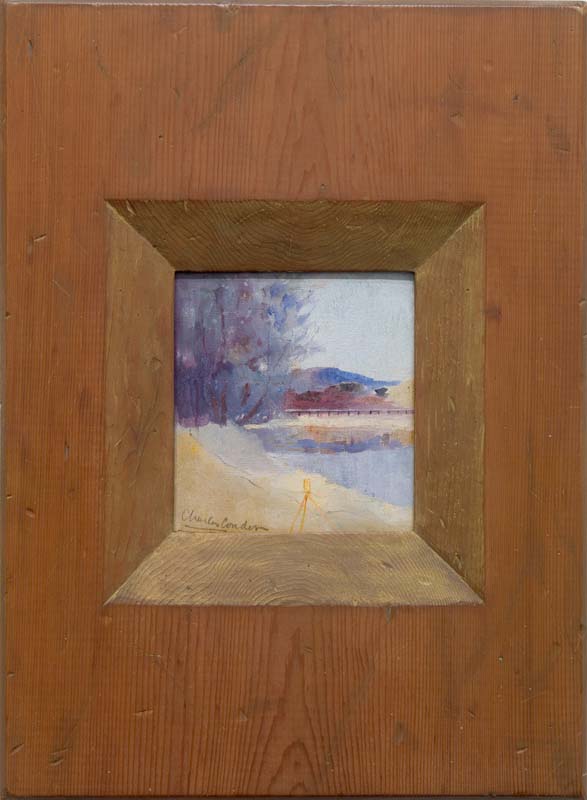We acknowledge the Traditional Owners of the land on which the Queensland Art Gallery | Gallery of Modern Art stands and recognise the creative contribution First Australians make to the art and culture of this country.

Charles Conder / Australia 1868–1909 / Landscape with theodolite c.1887 / Oil on canvas mounted on cardboard / 15 x 14cm / Gift of Lady Trout 1978 / Collection: Queensland Art Gallery | Gallery of Modern Art
Charles ConderLandscape with theodolite c.1887
Not Currently on Display
Charles Conder’s early works of this period pay great attention to capturing fleeting moments. Landscape with theodolite c.1887 was painted in Sydney, before Conder moved to Melbourne to join Tom Roberts, Arthur Streeton and Frederick McCubbin in the artists’ camps of the Heidelberg School.
The theodolite (surveyor’s instrument) in the foreground is an ironic reference to Conder’s part-time occupation as a surveyor — this is the contraption through which Conder the artist views the landscape.
Charles Conder was born in London in 1868. His father discouraged his interest in art and sent him to Sydney at the age of 15 to work for his uncle, an official in the Lands Department. For eight months, Conder worked in his uncle’s surveying office, and studied drawing in the evenings at the Art Society of New South Wales.
Conder’s uncle encouraged his interest in art and supported his decision to leave surveying to work as an illustrator for the Illustrated Sydney News. He soon met fellow artist Tom Roberts, and painted with him at Bondi and Coogee. Roberts invited Conder to return to Melbourne with him and, by 1888, the two artists were sharing a studio and painting with Arthur Streeton and Frederick McCubbin at the artists’ camps at Box Hill and Mentone.
In 1889, Conder moved to his own studio in Melbourne and enrolled in McCubbin’s drawing classes at the National Gallery of Victoria Art School. The following year, he returned to Europe where he studied at the Académie Julian in Paris and began painting on silk.
Discussion Questions
By placing the theodolite within the painting composition Conder makes a personal statement about his life’s journey. It becomes a symbol of the artist. What object would you use to symbolise you?
Classroom Activities
Research objects that enable people to make measurements. Select one that best represents an aspect of your life. Using collage or digital imaging construct an image that features your chosen object in a landscape that you identify with.